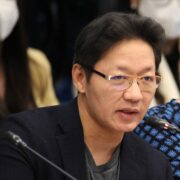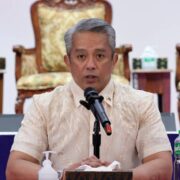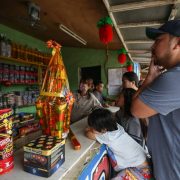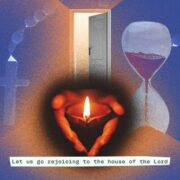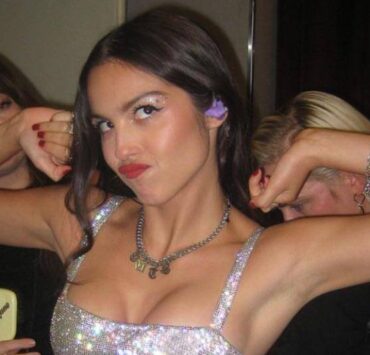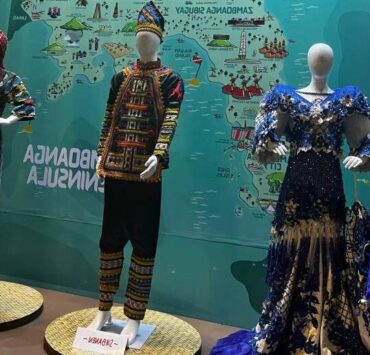‘Ningning sa Dilim’: The healing power of art
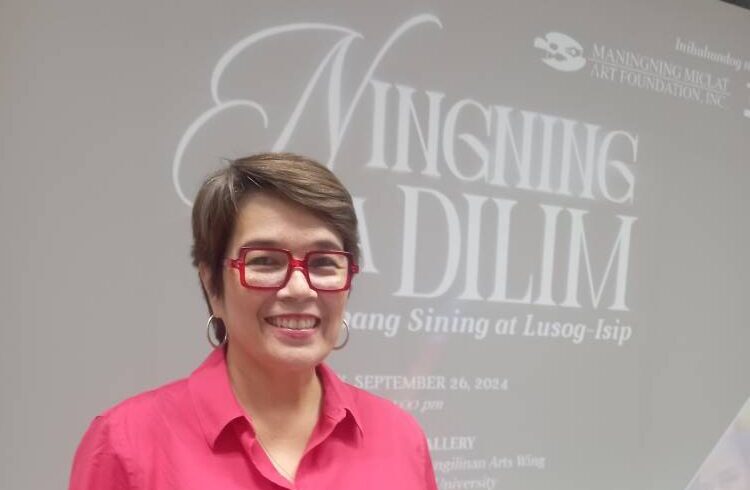
As far as visual artist and retired art professor Yasmin Almonte can remember, she’s always drawn to and played with colors. She can’t forget her grandmother, who gave her lots of paper and crayons so she could quietly sit in a corner.
Little did she know that disciplinary action would lead her to discovering art as an expression and coping mechanism.
“I was not born with a good deck of cards,” she said in her segment in the symposium, titled “Ningning sa Dilim: Usapang Sining at Lusog-Isip (Light in the Darkness: A Conversation on Art and Mental Health).” In fact, she added, she was unwanted by her own mother when she gave birth to her in 1957, an era when children with parents not married to each other were called “bastards” and were “shunned by society.”
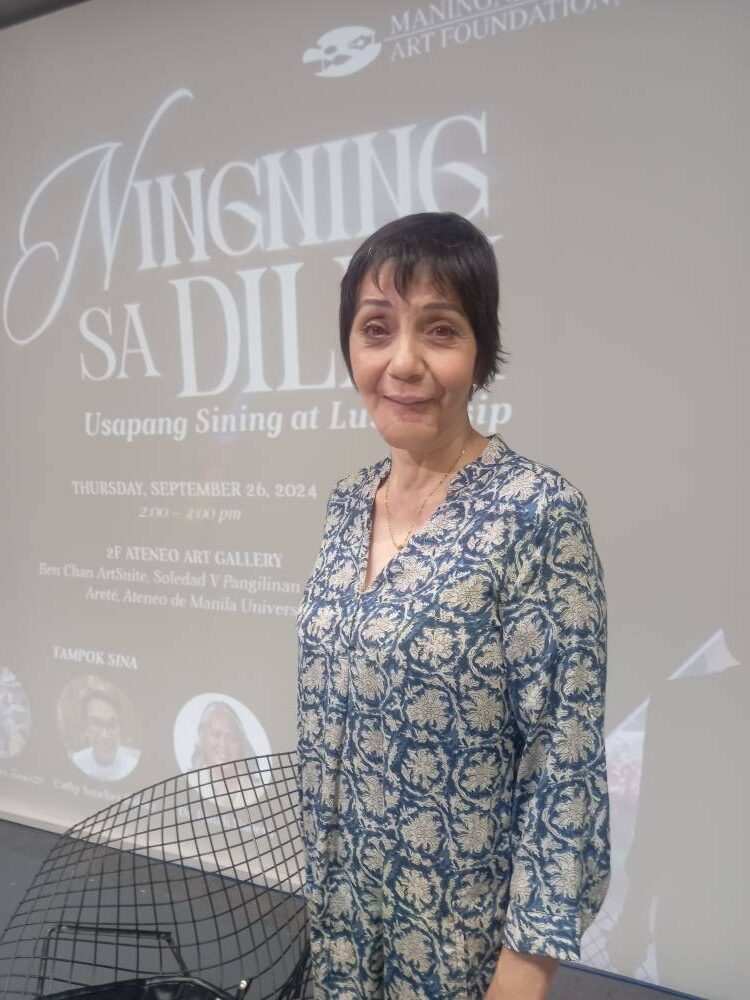
Almonte made it clear at the event, held on Sept. 26 at the Ateneo Art Gallery in Quezon City, that she doesn’t hate her late mother. She described her solo parent as a “victim of society” who “fell in love with the wrong person,” got pregnant, and again, this time with her. That’s why, she said, people told her mother to terminate the second pregnancy.
But the artist-speaker couldn’t hide her pain when narrating how her mother would tell her, starting at 5 years old, hurtful words in Filipino, such as “you’re so ugly,” while wishing the pregnancy had been terminated. All Almonte did was draw to her heart’s desire to cope and “escape that life.”
She admitted that getting married in her late teens was her way of trying to find happiness. “Unfortunately, it was a mistake because my husband did not love me. So, I suffered. I made the marriage work. But eventually I had it dissolved.”
Realizing that she had to do something for the sake of her children, Almonte thought of taking up dressmaking, but her sister, who had been watching her draw and paint, made her take the talent determination test at the UP College of Fine Arts. She hesitated at first, believing how her mother had labeled her “tanga” (stupid) to do anything at all. But she was persuaded by her sister, and so, she “gave it all” in that exam.
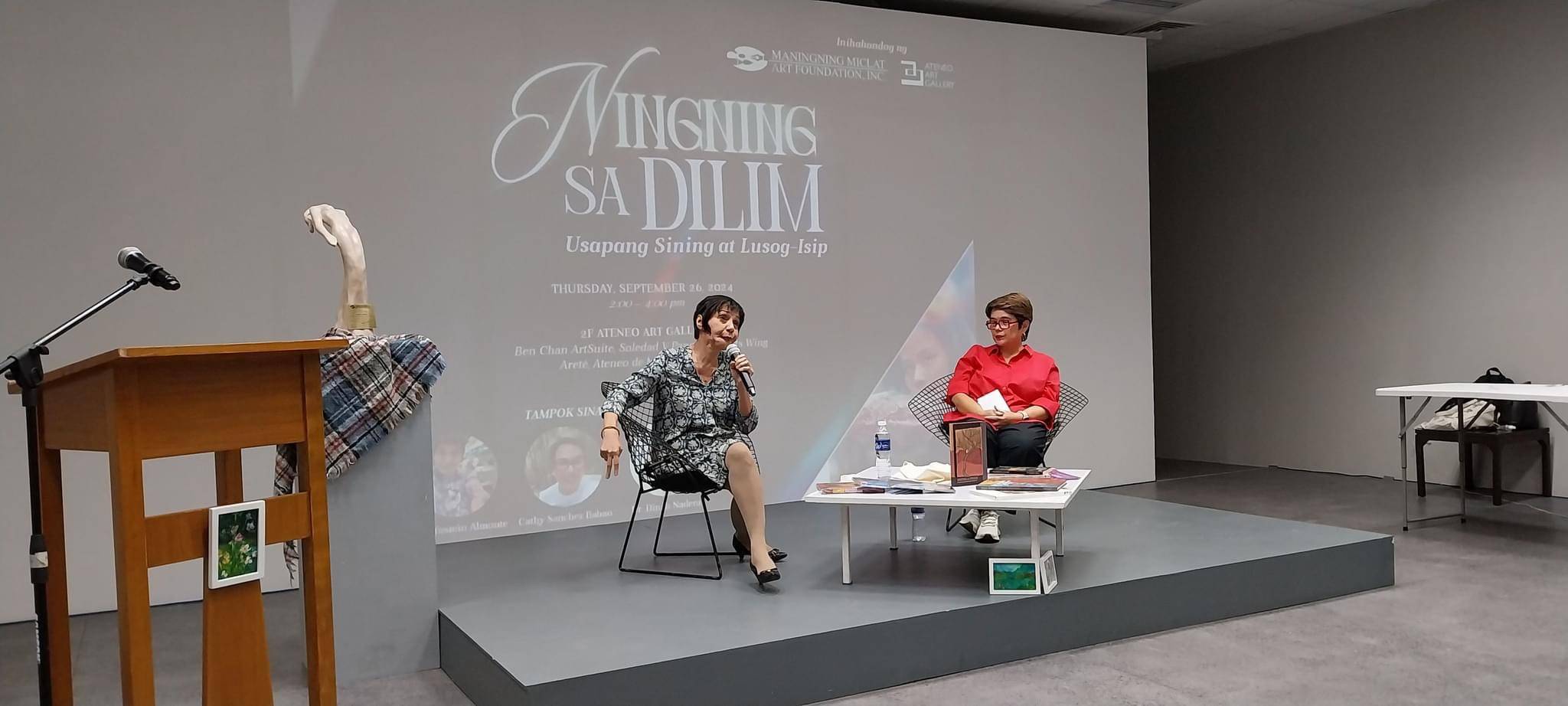
She went on to earn her degree and then teach in the same institution. Later, she went for further studies at the University of Northern Iowa in the United States. While abroad, she met somebody she thought she was in love with, so she married him. The marriage eventually fizzled out as “he demonized me,” thus she returned to the Philippines to start life anew.
“They may be nice people, but they were not nice to me,” she said of those who made her feel small, insignificant and incapable. But she made a decision to end the cycle of abuse and hurt. When she turned 50, Almonte resolved to live her life the way she wanted to. Aside from pursuing her art and teaching, she took up lessons in belly dancing, kickboxing and similar activities.
“I was enjoying my life, and then cancer struck. I was told, ‘If you don’t listen to your doctor, you have three months to live.’ It was like I was hit by a brick wall,” she recalled.
Almonte once again turned to her art to overcome sarcoma, and along with her faith in God, she came through. Today, at 67, she’s “living proof” of the healing power of art as highlighted in the symposium organized by the Maningning Miclat Art Foundation Inc. (MMAFI).
MMAFI was founded in April 2001 to honor the memory and continue the legacy of Maningning Miclat, a prized visual artist and trilingual poet in Filipino, English and Chinese, as well as an art teacher. She died from a fall from the seventh floor of the Institute of Architecture and Fine Arts of Far Eastern University on Sept. 29, 2000. The foundation also aims to “encourage creativity and recognize, nurture, and promote poets and artists 28 years old and below through awards and creative programs.”
Saving lives
Art as a coping mechanism can supplement medical care in the pursuit of wellness, said Cathy Sanchez Babao, who shared key theoretical frameworks in her segment. The grief, loss and transitions coach added that art helps in developing one’s hardiness through its three components: commitment, control and challenge.
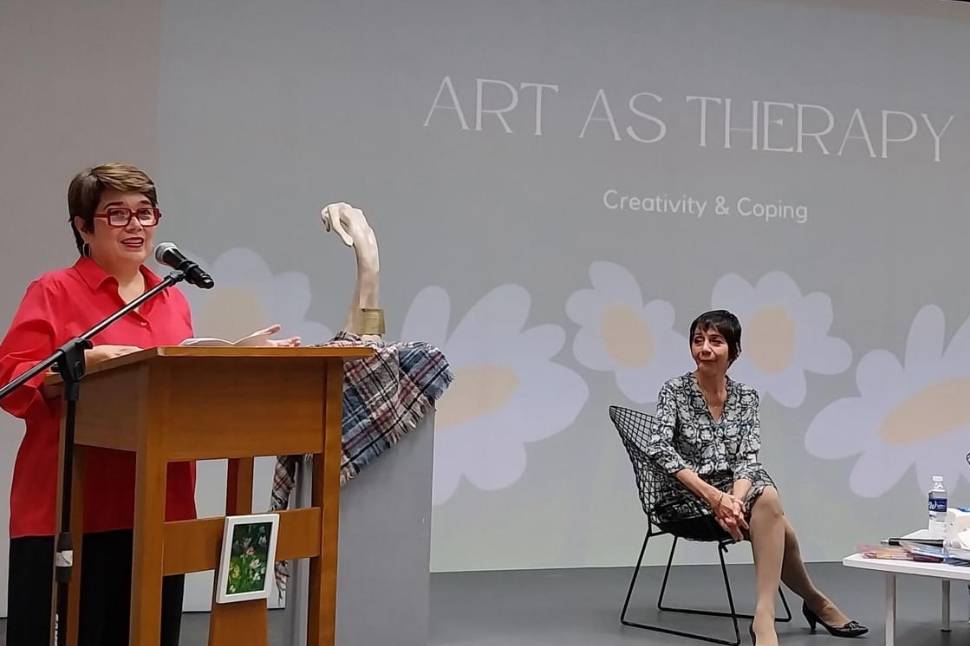
“Creativity increases one’s hardiness,” she explained. “We saw that in [Almonte’s] story. Resilience is the development of strength during a time of hardship … If you are resilient, it modifies your response to risk and lessens your vulnerability. Because resilience releases stress and builds strength. In her case, arts helped build her resilience. Through art, goals are met and tasks accomplished.”
Expounding further, she said, “Self-efficacy is how we perceive ourselves and our belief that the things that we do make a difference. It is strengthened through the pursuit of experience of mastery of growth and making art, like when she said, ‘I’m going to prove you wrong.’
“Art becomes a virtual reality for artists. The psychological aspect of the artist is projected in what they are making and what they actually sense themselves in their creations. We all want things that are not currently in our lives, things that may even seem beyond our grasp, such as having cancer and wanting the will to live. So her art helped her survive that difficult period and helped her survive a difficult marriage.”
Types of creativity
Sanchez Babao then differentiated everyday creativity from eminent creativity: “Everyday creativity is what we use daily. We improvise or cope with complex paths, like raising a family or cooking or whatever it is you need to do in your everyday life. Eminent creativity is the activity of professional artists through a specific form of making art—painting, sculpture …
“When art is used as a coping mechanism, everyday creativity can change into eminent creativity, and feelings of deprivation can evolve into achievements in the professional-like pursuit of wellness. So art really heals and art saves. Even in my work as a grief coach, I always encourage my clients to find some form of art—be it painting, writing, cooking, journaling. I’m a firm believer that art saves.”
Sanchez Babao told Lifestyle that art, in her primary form of writing and, additionally, painting, helped “make sense of the issues” she had during her periods of loss. “The process of writing makes sense whatever it was I was dealing with.”
Find what your child likes
When asked how parents can help their children try art if they aren’t artistic themselves, she echoed what was said during the discussion, that each one is an artist. “So I think the key for the parent is to also find out what the child is inclined to do. If you just force it, then it’s not gonna work. Being a parent is to know your child. Do they like drawing, building stuff, or writing or music?
“There are many art forms. Find out what your child likes. You can begin by exposing them to the different art modalities and see which one they are leaning toward. From there, you can enroll them in a class or provide them with materials to nurture that.”
Almonte agreed, telling Lifestyle, “Just give them the materials and don’t tell them what to do. I just exposed my kids and students. I just gave them materials and allowed them to create without intervention. Because it’s the process of expressing themselves.”
The youngest in her brood of three, Missy Maramara, is a well-known actor and director.



